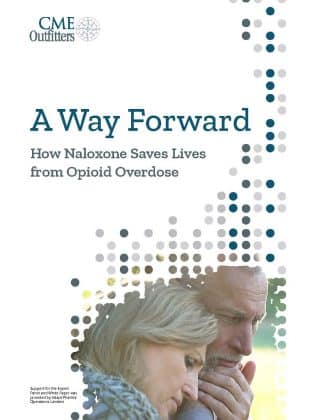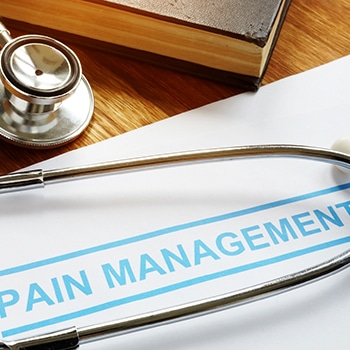Opioid Use in Dental & Oral Surgery

Surgical procedures, including third molar extractions are common procedures in which opioid-naïve patients, especially adolescents, are first exposed to opioids. While dentists and oral surgeons strive to compassionately manage patients’ pain, they must do so responsibly to curtail long-term use and misuse, as well as minimize potential diversion from large amounts of leftover prescription opioids. This is especially important among adolescents who are at heightened risk of future opioid misuse.
Many oral and maxillofacial surgery training programs are revising their acute postoperative prescribing protocols to decrease the number of opioids prescribed and promote use of non-opioid alternatives for pain management. Education for providers is essential to changing pain management protocols and mitigating risk of opioid misuse. Education, coupled with open communication with patients to set appropriate expectations and treatment goals, presents an opportunity to optimize clinical outcomes and improve patient satisfaction.
A Way Forward: How Naloxone Saves Lives from Opioid Overdose
 Increasing access to naloxone is essential to reducing overdose mortality. Strategies for increasing access must be thoughtfully developed and deployed to ensure that naloxone is available to any at-risk individual—whether that be an individual with chronic pain or someone with a substance use disorder—without the burden of stigma or judgement. CMEO convened an expert panel led by Dr. Mark Gold to discuss barriers and opportunities for distribution of naloxone to those at risk for overdose in the community. This white paper, A Way Forward: How Naloxone Saves Lives from Opioid Overdose reviews the data used by the panelists to establish their positions and recommendations for the way forward.
Increasing access to naloxone is essential to reducing overdose mortality. Strategies for increasing access must be thoughtfully developed and deployed to ensure that naloxone is available to any at-risk individual—whether that be an individual with chronic pain or someone with a substance use disorder—without the burden of stigma or judgement. CMEO convened an expert panel led by Dr. Mark Gold to discuss barriers and opportunities for distribution of naloxone to those at risk for overdose in the community. This white paper, A Way Forward: How Naloxone Saves Lives from Opioid Overdose reviews the data used by the panelists to establish their positions and recommendations for the way forward.
Jump to:
Live & On-Demand Webcasts CMEO Snacks CMEO BriefCases Resources Animations
Understanding Addiction Naloxone Toolkit Drugs of Abuse Reading Room Blog
Specialty Opioid Education Hubs
Resources
- OTC Analgesics for the Management of Acute Pain: Clinical Experience in the Era of the Opioid Crisis
- Adult Dosing Chart
- Understanding Your Drug Facts Labels
- Taking an OTC NSAID
- Taking Prescription Acetaminophen
- How to Properly Dispose of Your Unused Medicines
- List of Medicines Recommended for Flushing
- Controlled Substance Public Disposal Locations
- Do Your Health Conditions Affect Your OTC Pain Reliever Choice?
Resources for Teens and College Students
Teens
College Students
Animations
Understanding Addiction

The Addiction Policy Forum is a nationwide nonprofit organization dedicated to eliminating addiction as a major health problem. Our national headquarters are located in Washington, DC with resources and services in every state.
Why are Drugs So Hard to Quit?

The Disease Model of Addiction

Naloxone Toolkit
Naloxone Administration

Naloxone Facts

Addiction & the Brain

Facts About Drugs of Abuse
Reading Room
- Schroeder AR, Dehghan M, Newman TB, Bentley JP, Park KT. Association of opioid prescriptions from dental clinicians for US adolescents and adults with subsequent opioid use and abuse. JAMA Intern Med. 2019;179(2):145-152.
- Tompach PC, Wagner CL, Sunstrum B, Nadeau RA, Tu HK. Investigation of an opioid prescriber protocol after third molar extraction procedures. J Oral Maxillofac Surg. 2019;77:705-714.
- Mutlu I, Abubaker AO, Laskin DM. Narcotic prescribing habits and other methods of pain control by oral maxillofacial surgeons after impacted third molar removal. J Oral Maxillofac Surg 2013;71(():1500-1503.
- Al-Khteeb TH, Alnahar A. Pain Experience After Simple Tooth Extraction. J Oral Maxillofac Surg. 2008;66(5):911-917.
- Overton HN, Hanna MN, Bruhn WE, et al. Opioid-prescribing guidelines for common surgical procedures: an expert panel consensus. J Am Coll Surg. 2018;227(4):411-418.














